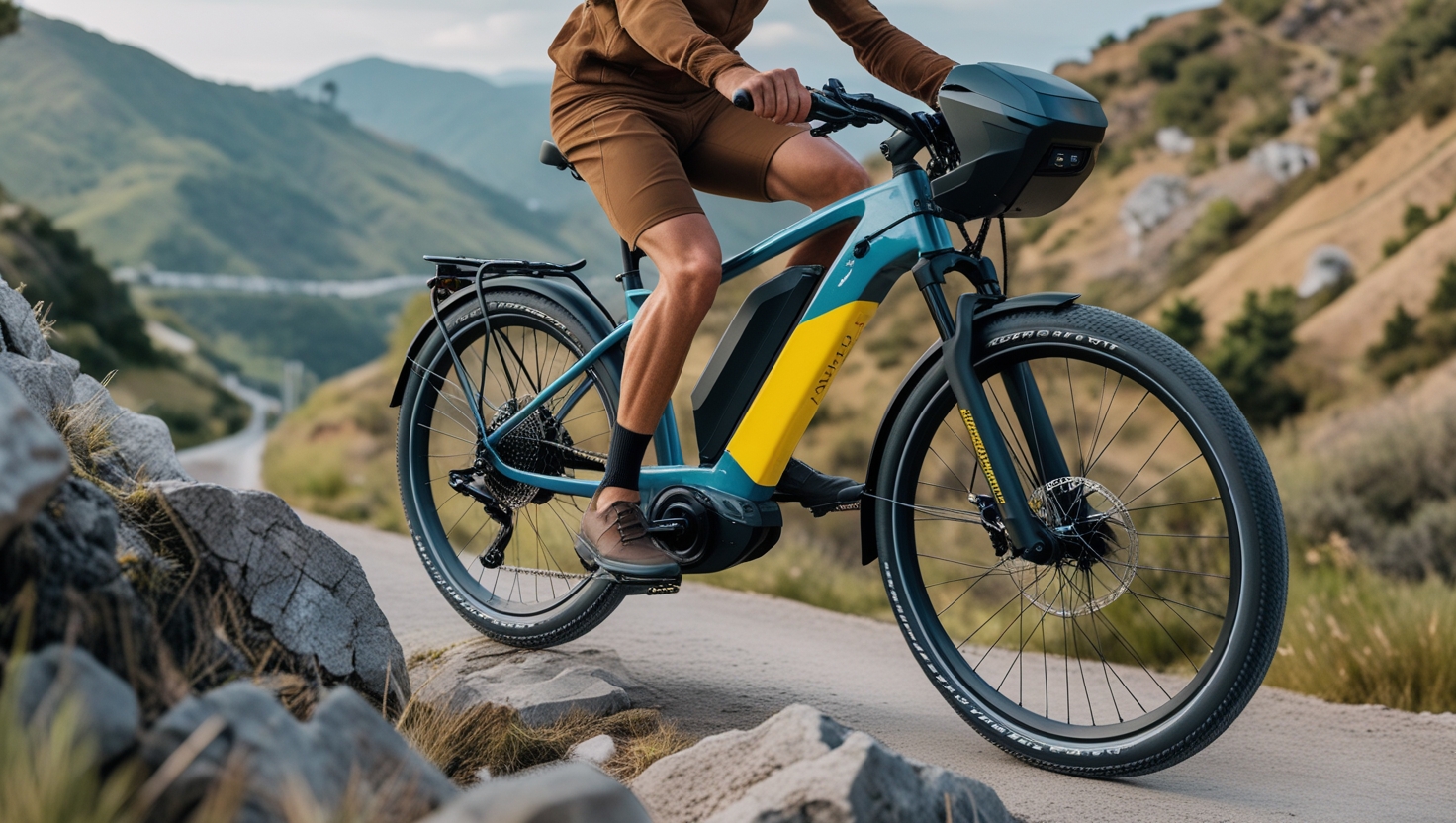As I stood at the base of a daunting hill, my trusty bicycle by my side, I couldn’t help but feel a twinge of dread. Was I really going to tackle this steep incline on pure leg power alone? 😓 That’s when it hit me – there had to be a better way to conquer these challenging terrains without arriving at my destination drenched in sweat and gasping for air.
Enter the world of e-bikes, my newfound savior for hilly adventures! 🚴♂️⚡ These marvelous machines have revolutionized cycling, making even the steepest climbs feel like a breeze. But with so many options on the market, how does one choose the perfect e-bike for tackling those intimidating hills? Fear not, fellow cyclists! I’ve done the legwork (pun intended) to bring you the ultimate guide to selecting the best e-bikes for hilly terrains.
In this blog post, I’ll take you on a journey through the essentials of e-bikes designed for conquering elevations. We’ll explore the top models that laugh in the face of gravity, dive into the crucial components that make hill-climbing a cinch, and compare different drive systems to find your perfect match. So, strap on your helmet and get ready to leave those hill-induced worries behind – it’s time to elevate your cycling game! 🏔️🚴♀️💨
Understanding E-Bikes for Hilly Terrains

What makes an e-bike suitable for hills
I’ve found that the key to tackling hilly terrains on an e-bike lies in its motor power and battery capacity. A powerful motor, ideally 250W or more, provides the necessary assistance to conquer steep inclines. Coupled with a high-capacity battery, it ensures I can ride longer distances without worrying about running out of juice mid-climb.
Key features to look for
When selecting an e-bike for hilly terrains, I focus on these crucial features:
- Motor power (250W+)
- Battery capacity (400Wh+)
- Gear range
- Tire traction
- Frame material
| Feature | Importance | Reason |
|---|---|---|
| Motor power | High | Assists in climbing |
| Battery capacity | High | Extends ride duration |
| Gear range | Medium | Provides versatility |
| Tire traction | Medium | Ensures stability |
| Frame material | Low | Affects weight |
Benefits of using e-bikes on hilly terrain
I’ve experienced numerous advantages of using e-bikes on hilly terrain. The electric assistance reduces physical strain, allowing me to tackle challenging routes with ease. I can maintain a consistent speed uphill, saving energy for longer rides. Additionally, e-bikes make exploring hilly areas more accessible and enjoyable for riders of all fitness levels.
Top E-Bike Models for Tackling Hills

High-powered mountain e-bikes
I’ve tested numerous e-bikes, and mountain models truly excel on hills. Here’s a comparison of my top picks:
| Model | Motor Power | Range | Price |
|---|---|---|---|
| Trek Powerfly | 250W | 80 miles | $4,999 |
| Specialized Turbo Levo | 565W | 40 miles | $5,500 |
| Giant Trance X E+ | 250W | 75 miles | $5,200 |
These e-bikes offer:
- Powerful motors
- Long-lasting batteries
- Sturdy frames for rough terrain
Versatile all-terrain e-bikes
Essential Components for Hill Performance

Motor power and torque
I’ve found that motor power and torque are crucial for conquering hills. A powerful motor, typically 250-750W, provides the necessary oomph for steep climbs. High torque, ideally 70-100Nm, ensures smooth acceleration and consistent performance on inclines.
| Motor Spec | Recommended Range |
|---|---|
| Power | 250-750W |
| Torque | 70-100Nm |
Comparing E-Bike Drive Systems

Hub motors vs. mid-drive motors
I’ve tested both hub and mid-drive motors extensively on hilly terrains. Here’s a quick comparison:
| Feature | Hub Motors | Mid-Drive Motors |
|---|---|---|
| Weight Distribution | Heavier rear | Balanced |
| Efficiency | Lower | Higher |
| Climbing Ability | Good | Excellent |
| Maintenance | Easier | More complex |
Pedal-assist levels and their impact
Throttle options for extra boost
After exploring the world of e-bikes designed for hilly terrains, I’ve discovered that the right choice can make a significant difference in conquering challenging landscapes. From understanding the key features that make an e-bike hill-friendly to comparing various models and drive systems, I’ve learned that power, battery life, and gear ratios are crucial factors to consider.
I encourage you to take this information and apply it to your own e-bike search. Whether you’re a daily commuter facing steep inclines or an adventure enthusiast looking to tackle mountainous trails, there’s an e-bike out there perfectly suited for your needs. Remember, investing in the right e-bike for hilly terrain not only ensures a more enjoyable ride but also promotes a sustainable and efficient mode of transportation. Happy riding!
